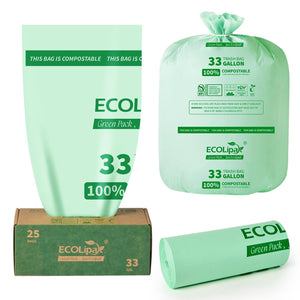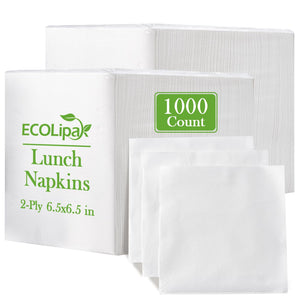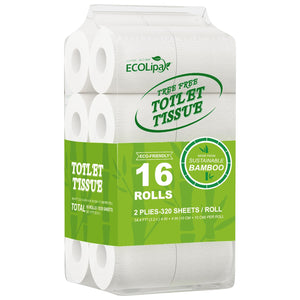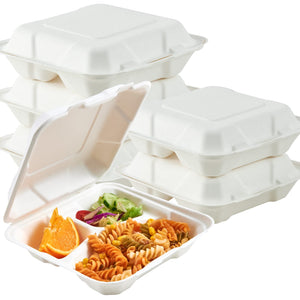You may believe special composting bags are necessary for your backyard bin. These bags are often not needed. They can even cause issues for your home compost. Your choice to compost makes a big difference for our planet.
Did you know? Approximately 28% of the waste in U.S. landfills is compostable material.
This guide helps you simplify the process. You can save money and improve your compost quality. You will find that managing food scraps without compostable bags is easy with clean, practical alternatives.
Key Takeaways
Compostable bags often do not break down in home compost piles. They need very high heat from industrial facilities.
Many city composting programs do not accept compostable bags. This prevents contamination in their systems.
You can easily collect food scraps without bags. Use a bare pail, paper liners, or freeze your scraps to stop odors.
A good kitchen pail has a tight lid. This keeps pests out and smells in. You can also use a charcoal filter for better odor control.
LIMITATIONS OF COMPOSTABLE BAGS
You might think that using compostable bags is the best choice for your backyard bin. However, these bags often create more problems than they solve for home composters. Understanding their limitations helps you make a better choice for your garden and the planet.
HOME PILE HEAT ISSUES
The main issue with compostable bags in a home setting is temperature. Your backyard compost pile is a living ecosystem, but it rarely gets hot enough to break down these specialized bags.
The Heat Requirement: Most certified compostable bags need sustained high temperatures to decompose properly. For many, this means the compost must stay consistently above 113°F (45°C).
Backyard Reality: A typical backyard pile often operates at lower temperatures, usually between 90-140°F (32-60°C). This heat can fluctuate greatly with the weather and the pile's size.
This temperature difference is critical. Studies show that even certified home composting bags struggle to break down in real-world garden bins. Instead of turning into rich compost, they often remain as large, visible pieces. These fragments can pollute your soil with microplastics, which can harm wildlife and potentially enter the food chain. Incomplete decomposition means you are left cleaning plastic-like scraps out of your finished compost.
MUNICIPAL PROGRAM RULES
You may assume that if you cannot use composting bags at home, you can send them to your city's green bin program. Unfortunately, this is often not the case. Many municipal and commercial composting facilities do not accept them.
A Composter's Biggest Problem: Contamination Neil Edgar, a composting expert from the California Compost Coalition, says the primary issue with compostable packaging is "contamination, contamination and contamination."
Facilities face a major challenge in telling compostable bags apart from regular plastic bags. This confusion leads to contamination, which ruins the quality of the final compost. Here’s why many programs say no:
Processing Times: Commercial facilities operate on tight schedules. The bags may not break down fast enough to keep up with their process, forcing them to screen out and landfill the material.
Operational Costs: Removing these contaminants is an expensive and time-consuming task for facilities. Some estimate that removing contaminants can account for up to 20% of their operating costs.
Look-Alike Products: Many products look compostable but are not. This widespread confusion causes people to throw the wrong items into green bins, which contaminates the entire batch of compost.
Because of these issues, many cities have banned all bags, including compostable ones, to ensure a clean and high-quality final product.
"BIODEGRADABLE" VS. "COMPOSTABLE"
Term |
What It Really Means |
|---|---|
Biodegradable |
This is a vague term. Everything will biodegrade eventually, but it might take hundreds of years. In the U.S., there are no official standards to ensure a product is truly biodegradable in a short time. These products often break down into microplastics. |
Compostable |
Using a product simply labeled "biodegradable" in your compost is a recipe for plastic pollution. While certified composting bags are designed to break down, they are made for the high-heat industrial facilities mentioned earlier, not your backyard bin.
THE RIGHT WAY TO USE COMPOSTING BAGS
While compostable bags are not ideal for your backyard pile, they have a specific purpose. They are designed for large-scale industrial composting facilities. These sites have the right conditions to break them down completely. Understanding how to use them correctly ensures your efforts help the environment instead of causing contamination.
CHECK YOUR LOCAL PROGRAM
Before you buy any compostable bags, you must check your local rules. Many cities have specific guidelines for their green bin or curbside compost programs.
Tip: Visit your city’s department of sanitation website. For example, New York City's DSNY website clearly lists what is and is not allowed in their curbside compost bins. Your town’s website is the best source for accurate information.
Some municipal programs accept compostable bags to help keep bins clean. Others ban them entirely to prevent contamination. A quick search will tell you if your program allows them.
CHOOSE CERTIFIED PRODUCTS
If your local program accepts compostable bags, your next step is to choose the right product. You should only use bags that are certified by a recognized authority. This certification guarantees the bag will break down properly in an industrial facility.
You can verify a product’s certification by checking online databases.
BPI (Biodegradable Products Institute): You can search their online catalog by product type or company name.
CMA (Compost Manufacturing Alliance): They provide downloadable lists of all approved products.
Using certified composting bags ensures they meet industry standards for creating high-quality compost. Trusted brands that focus on sustainability offer certified options designed for this purpose.
WHEN BAGS MAKE SENSE
Composting bags are useful in specific situations. They are perfect for lining kitchen pails or food waste carts in municipal food scrap collection programs. This helps manage odors and messes before you transfer the contents to your curbside bin. The key is that the final destination for the bag is an industrial facility, not your home compost pile.
The table below shows why these bags work in industrial settings but not in your backyard.
Feature |
Industrial Composting |
Home Composting |
|---|---|---|
Temperature |
Consistently high heat (above 131°F) breaks down bioplastics. |
Lower, fluctuating temperatures cannot break down bioplastics. |
Materials |
Can process bioplastics, meat, and dairy safely. |
Limited to yard trimmings and certain food scraps. |
Time |
Breaks down materials in a few months. |
A much slower process; can take a year or more. |
Using bags correctly supports a cleaner, more efficient municipal compost system.
PRACTICAL BAG-FREE COLLECTION METHODS
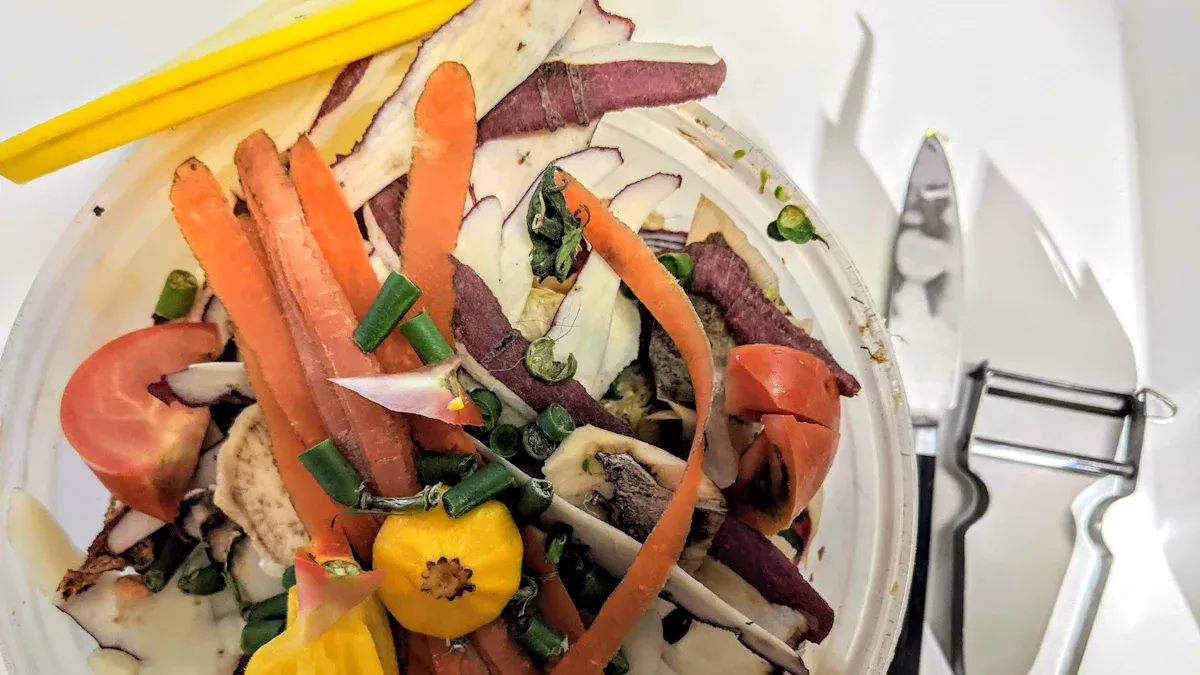
Going bagless is simpler than you think. You can easily manage your kitchen scraps with a few smart, clean, and practical methods. These techniques help you save money, reduce waste, and create better compost for your garden.
COLLECTING FOOD SCRAPS BARE
The most straightforward method is to collect scraps directly in your pail. This "bare" method completely eliminates the need for any liner. It is simple, free, and highly effective when you follow a few easy steps.
To prevent odors and mold, you should empty your pail frequently.
Washing: Give the pail a quick rinse with water each time you empty it. You can wash it more thoroughly with soap and warm water whenever it seems grimy. Always let the pail air dry completely with the lid open to stop mold from growing.
Pro Tip: Add Absorbent Browns Tossing a used paper towel, some shredded newspaper, or a piece of cardboard into your pail helps a lot. These "brown" materials soak up moisture from wet food scraps. This simple trick reduces sliminess, controls odors, and makes your pail much easier to clean.
USING PAPER LINERS
If you prefer a liner, paper is an excellent choice. Using newspaper or a paper grocery bag keeps your pail clean and adds valuable carbon to your compost.
Adding paper liners helps balance your compost pile.
Material Type |
Role in Compost |
C:N Ratio |
|---|---|---|
Food Scraps |
"Greens" - Rich in Nitrogen |
~15:1 |
Paper Liners |
"Browns" - Rich in Carbon |
~200:1 |
Your compost pile needs a good mix of greens and browns to work efficiently. The ideal ratio is about 25 parts carbon to 1 part nitrogen. Paper liners help you achieve this balance. Just be sure not to add too much paper at once, as it could slow down the decomposition process.
FREEZING SCRAPS TO STOP ODOR
Freezing your food scraps is a brilliant way to stop odors and pests before they start. This method is perfect if you do not take scraps out daily or if you live in a warm climate. The cold temperature stops decomposition, so there is no smell and nothing to attract bugs.
You can use various reusable containers to store scraps in your freezer.
Freezer Bags: Gallon-sized freezer bags are a space-saving choice. You can freeze the scraps flat and then stack the bags vertically like books.
Silicone Molds: Large silicone molds, sometimes used for soup, let you freeze scraps into uniform blocks. Once frozen, you can pop the blocks out and store them in a larger bag or container.
Stackable Containers: Reusable meal prep containers or other stackable containers with lids are great for organizing your freezer. They use vertical space efficiently.
When your container is full, you can simply carry the frozen block of scraps out to your compost pile.
CHOOSING THE RIGHT PAIL
Your choice of a kitchen collection bin can make a big difference in managing odors and pests. A good pail is your first line of defense.
Look for a pail with a tight-fitting lid. This creates a physical barrier that keeps pests out and smells in. For even better odor control, choose a pail that uses a charcoal filter in the lid. The charcoal actively absorbs odors, keeping your kitchen smelling fresh. These filters are very effective, especially if you empty your bin less than once a week.
Another excellent bag-free option is a worm compost bin, also known as vermicomposting. In this system, worms actively process your kitchen waste, turning it into nutrient-rich compost with virtually no odor. It is a self-contained, efficient, and fascinating way to handle your scraps right in your home or on a balcony.
You can create better home compost without special compostable bags. This makes your compost journey simpler and more effective. You can easily manage food scraps by collecting them bare, using paper liners, or freezing them.
Your Impact: Embrace a bag-free method to produce excellent compost. Your efforts create healthier compost and a greener planet. 🌱
Confidently choose one of these simple techniques. You will enjoy a cleaner, more rewarding composting experience.
FAQ
Won't my kitchen pail get gross without a bag?
Your pail will stay clean with a few simple habits. You can rinse it after each use and wash it with soap weekly. Placing a paper towel at the bottom absorbs moisture. This keeps your pail from getting slimy and makes cleanup easy.
Can I put meat and dairy in my home compost pile?
You should avoid adding meat, bones, and dairy to your backyard compost. These items can attract pests and create strong odors. They also break down very slowly in a home pile. Stick to fruit scraps, vegetable peels, coffee grounds, and eggshells.
How do I stop pests from getting into my kitchen scraps?
A pail with a tight-fitting lid is your best defense against pests. You can also choose a pail with a charcoal filter to absorb smells. Freezing your scraps is another great method. The cold stops odors that might attract fruit flies or other insects.
Why can't I use certified compostable bags in my backyard bin?
Certified compostable bags need the very high, consistent heat of an industrial facility to break down. Your backyard pile does not get hot enough. The bag will not decompose properly and can leave plastic-like pieces in your finished compost. 🌱




